Havana, Cuba March 25, 2003
Dear Friends,
Greetings from Cuba!! Just a couple of weeks before my departure to Havana, I could not have imagined soaking up the warm and humid trade winds here on this beautiful Caribbean Island. Instead I was entertaining thoughts of attending a Spanish course in Guatemala, when my old pal Jimmy Bentley called out of the blue to tell me he was looking for a nutcase to join him in defying the US embargo of Cuba and visiting this mysterious Island. Well, it was one decision I didn’t have to antagonize about: during that phone call I committed and we set about to find tickets to Havana, the capital of Cuba. Jim’s cousin Chris also joined us on this adventure for two out of three weeks. With the three of us we should be able to muster enough Spanish to engage in some ruthless bargaining for food, rooms, etc. The reality would later turn out to be much different: what we considered to be great deals, emerged later to be nothing more than fraud. And we thought we were seasoned travelers!
Our route was a little circuitous, as we had to catch a flight from California to Florida, and then from there hop on a commuter turbo prop for the ninety minute flight to Nassau, Bahamas. Horribly expensive and over run by tourists is all I can say about my first impressions of the Bahamas. In fact, it was so expensive that we skipped dinner for an appetizer and spent the night on the roof of a hotel under construction. Yeah, the mosquitoes got to us after a while, but we had the penthouse suite with an ocean view at no cost. Our skylight was so extensive that it covered the entire ceiling. The next day we boarded a well worn Soviet Antonov turbo prop owned by Aero Cubana. As greasy as some of the engines’ hatches looked, the plane was quite stable in the air and the attendants were every bit as courteous as other airlines’ attendants. However, a guard from the Cuban revolutionary army was present by the cockpit to ensure that the pilots didn’t get any funny ideas about defecting to the US. At the airport in Havana, we were greeted Fidel Castro himself in the form of a ubiquitous televised speech. In line for the customs desk, we got to listen to his rantings about the evils of capitalism and the “CIA terror” in Cuba. The first shock occurred right at the airport exit, where we found out that taxi rates were every bit as steep as in major US cities. So we bit the bullet and hooked up with another American to share the costs. While we picked Cuba to experience a different culture, our new American friend, Fred, picked Cuba for its women. Blatantly honest, he admitted that he was solely there to “ravish the women”. It was his twentieth trip. Considering his beer belly and uncut toe nails, we assumed that he was exceedingly rich or the women were exceedingly desperate. Nevertheless, he turned out to be only slightly annoying and Jimmy and Chris took advantage of his local knowledge and joined him for a day of guided fishing on a boat.
As far as Havana is concerned, it is most definitely one of the liveliest and loudest cities I have seen yet. Even now, in the dry season, the air is humid and it would be uncomfortably warm if it weren’t for the refreshing Caribbean breezes. The city itself is absolutely dilapidated and in decay; it was declared a UNESCO World Heritage Site in 1982, but restoration efforts are slow at best. The last time any new construction occurred, was before the revolution in 1958. Only government buildings and military installations seem less than at least four decades old. Some three hundred buildings collapse in old Havana every year due to lack of maintenance and I don’t even want to mention low water pressure, deteriorating sewer lines, exposed electric lines that would give the folks at the Underwriters Laboratories heart attacks, if they saw them. Somewhere else I read that an astonishing ninety thousand buildings in Havana are in dire need of reconstruction.
If you can overlook the horrendous housing conditions, the ambience and atmosphere sweep you off your feet: people sit in chairs right on the side walks and watch kids play on the streets. Havana’s water front, known as the Malecon, is a five mile long side walk with a low wall that holds hurricane inspired waves back. In the evenings thousands of people, young and old, congregate on this wall and exchange all kinds of gossip and news. The old Spanish fort overlooks the wide bay from the tip of a peninsula that juts out toward the Malecon. At night a still functional light house shows ships the way to Havana from atop a rise next to the fort. City traffic is a cacophony of noised from little Indonesian motorcycles, Soviet era trucks, Italian Fiats, Mexican VWs, Russian Lada and Moksvich passenger vehicles, and of course the huge 1940’s and 50’s Chevys, Cadillacs, and Dodges. Those lumbering American beasts have been lovingly coated and recoated with bright shades of house paint. The engines, however, sound like they have seen much better days. But with shade tree mechanic skills their owners keep them running day after day, year after year. Since new cars are virtually impossible for average Cubans to acquire, the old vehicles are maintained with all kinds of homemade replacement parts and passed down the generations.
After some hanging out with the locals we found out just how fond they are of Americans, even though our government still maintains a strict trade embargo against Cuba. But time and time again, we heard through their broad smiles, how much they love us. “Eres Norte Americano? Gustamos sus pais!!” We love your country!! Many of them tell us of relatives in Miami or elsewhere. More than anything else, this attitude touched me the most, especially considering how poor they are and how rich we are by their standards.
Food: with decades of communism, it seemed that a lot of the creativity that goes into cooking has been stifled. After meeting some US Cubans in California and sampling their cooking, I would say that food in Cuba has a lot more potential than what I saw. Unlike Mexico, where even the smallest food stand is likely to provide tasty morsels, here the food stands should be considered as a bland source of calories and used in desperation only. Some of the best places have been the home cooked meals in people’s houses and in the little hole-in-wall restaurants.
Supermarkets: nonexistent; to this day I wonder where the locals get their food. Fidel discourages open air markets as being too capitalistic. I suspect that the rice and wheat sack ware houses we spotted have something to do with people getting their basic nutrition.
Prostitutes: Bangkok (Thailand) is famous for its prostitution, but Havana seems to be as saturated with these women of the night. Sensual pleasures are only $15 away. One needs no courage to ask, but only a lapse in fending off some of these very curvy and smooth skinned propositioners. It was my first experience, as a male, in hanging out in a bar or cafe and being hit on constantly. I guess we just look like gullible foreigners. Jimmy and I resisted their temptations more or less successfully, but Chris found himself in the company of hired women more often than he can probably remember. How much services they rendered to him is still a mystery to me, but everything sure reeked of lust. Other cultural experiences encompassed some interesting museums, one of which dealt with Cuban history since its settling by Carib and Arawak natives all the way to the Elian Gonzalez episode, which in the year 2000, pitted the Cuban expatriate community in Florida against the Cuban government. Very conspicuously absent was any account of the Cuban missile crisis of 1962, that probably pushed the world closer to a total nuclear war than ever before. The 1961 Bay of Pigs fiasco, however, received a lot of museum space including pieces of an US Air Force plane shot down during the conflict.
So much about Havana for now; next time I’ll have some input about the Cuban country side and other cities. Back to more interaction with the horny crowd along the Malecon!

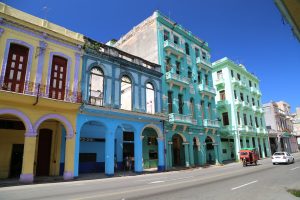
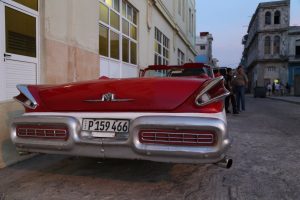
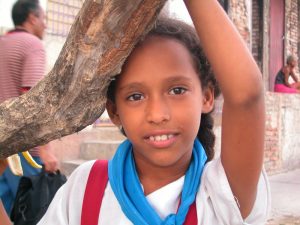
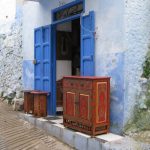



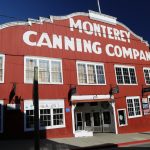

Leave a Reply